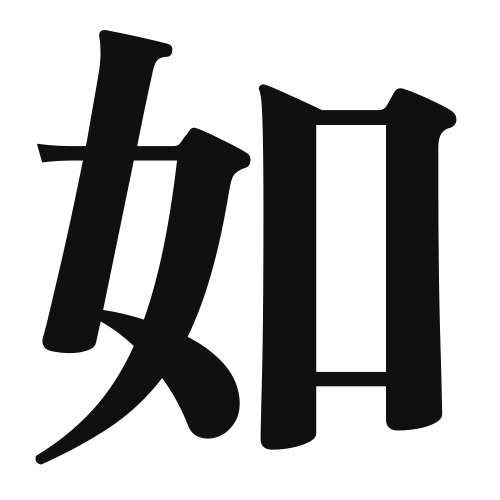1. Overview of Meaning
The kanji “如” (pronounced “nyo” or “jo”) generally means “like” or “as.” It is often used to express similarity or comparison in various contexts.
2. Formation and Radical
Formation of the Kanji: The kanji “如” is classified as a phonetic-ideographic character (形声文字). It combines a semantic component that suggests similarity with a phonetic component that indicates its pronunciation.
Radical: The radical for “如” is “女” (woman), which is often associated with femininity and nurturing qualities.
3. Examples of Usage
Common Words and Phrases: “如実” (nyojitsu – “as it is”), “如意” (nyoi – “as one wishes”).
Example Sentences in Daily Conversation:
- 彼は私のように歌うことができる。 (Kare wa watashi no you ni utau koto ga dekiru.) – He can sing like me.
- この絵は本物のように見える。 (Kono e wa honmono no you ni mieru.) – This painting looks like the real thing.
4. Synonyms and Antonyms
Similar Kanji: “似” (ni) also means “to resemble” but is more commonly used in everyday language. “如” has a more formal or literary connotation.
Opposite Kanji: “異” (i) means “different” or “unlike,” representing a contrast to the meaning of “如.”
5. Cultural and Historical Background
Relation to Japanese Culture: The kanji “如” is often found in classical literature and philosophical texts, reflecting concepts of similarity and understanding.
Proverbs and Idioms: One common expression is “如実に” (nyojitsu ni), meaning “truthfully” or “as it is,” which emphasizes honesty and clarity in communication.
